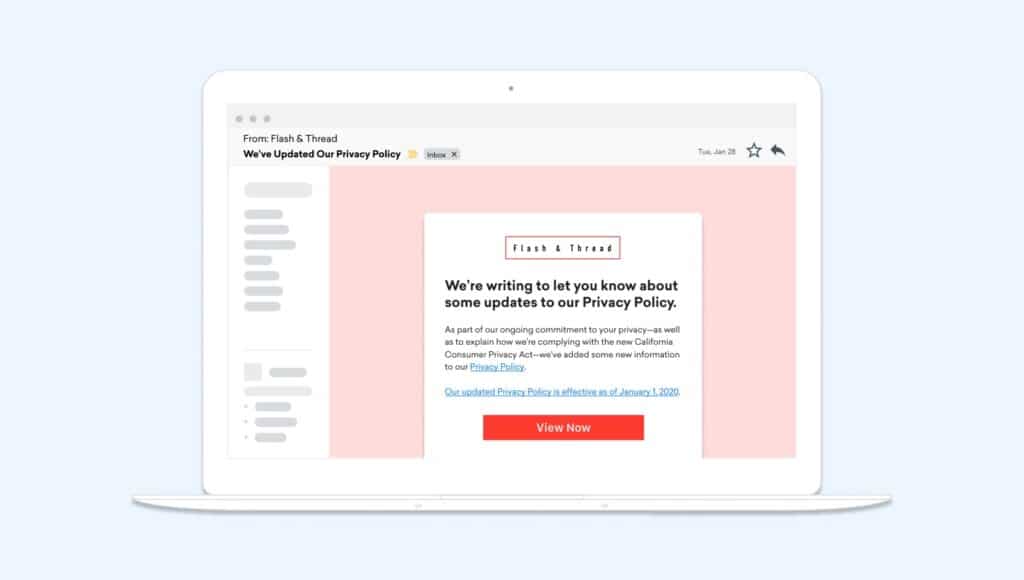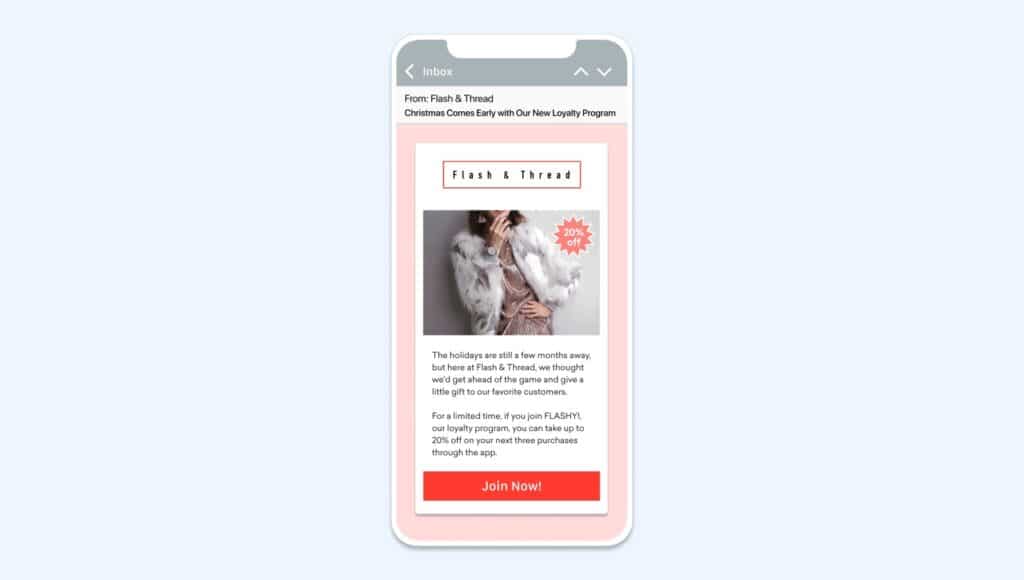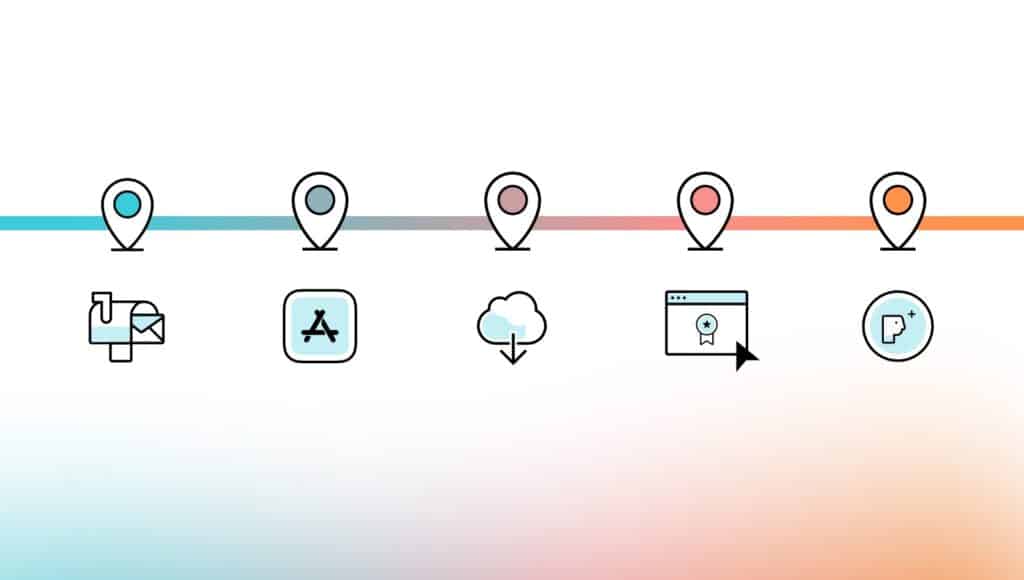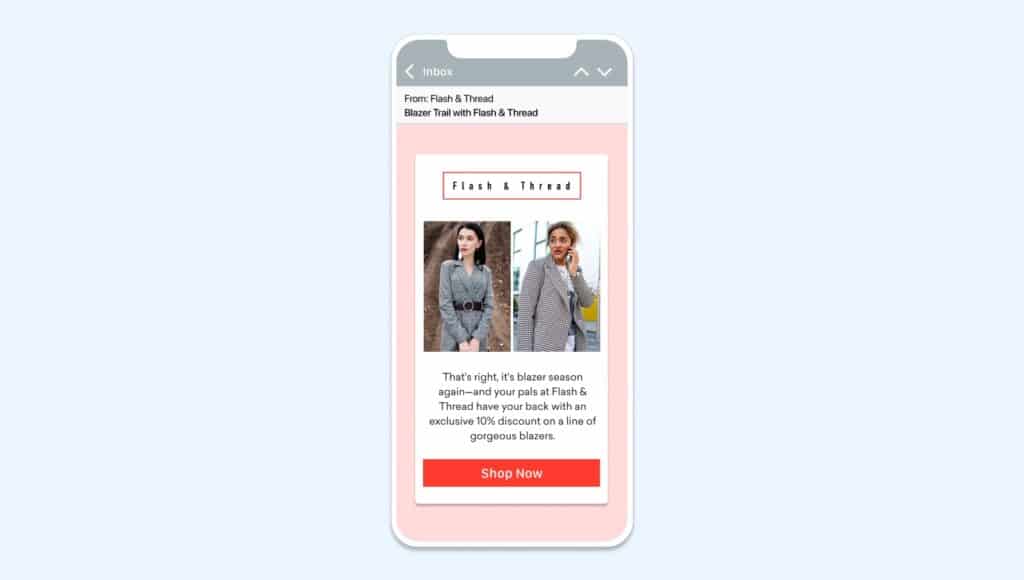
More than half of emails are opened on mobile devices. So, if you’re looking to optimize your brand’s email marketing campaigns, one of the best places to start is by improving the mobile experience for your customers. One simple, effective way to start doing that is taking advantage of deep linking. In a nutshell, deep linking makes it possible to send customers directly to specific content within your app, rather than sending everybody to your website (or dumping them on the app’s main screen) when they click a link. This is beneficial because compared to mobile web users, mobile app users are 3x more likely to convert and spend 20x more time in apps.
Linking directly to content within a mobile app sounds simple enough. We link to specific web content all the time, right? It may sound straightforward, but doing so is actually surprisingly complex (and as many as 60% of links that attempt to do just that may actually be broken). That complexity — often resulting in broken links — is one major cause of the confusing and frustrating experiences customers end up dealing with on a daily basis when receiving emails from otherwise well-meaning brands. By enabling brands to lead customers directly to the right mobile app content (something that’s otherwise challenging in a world where the building blocks of mobile apps and websites do not speak the same language), deep linking has been shown to double conversions, increase customer retention, and boost overall engagement.
That said, there’s a right way to approach email deep linking on mobile, and that’s what we’re here to share: Three things to keep in mind to ensure you’re getting it right.
1. Be Purposeful About When You’re Linking Out to a Website Versus Your Mobile App in Your Email
It’s always important for marketers to be mindful of who their audience is for a given message or campaign and what experience they’re providing to them — and that goes double when it comes to mobile email. If your brand is sending an email campaign (or, alternately, a cross-channel messaging campaign that includes an email component) that’s looking to drive recipients to a particular location, what that location is can have a big impact.
While it’s true that mobile apps have 3x higher conversion rate than mobile websites, as mentioned above, sometimes driving to your website is exactly what you need. Maybe you’re highlighting a page that exists on your website but hasn’t yet been built within your app, for instance, or have notably different audiences for your app and web experience. But because app links require deep linking to support functionality, one smart thing that you can do to avoid broken customer experiences is to use your customer engagement platform’s segmentation tools to target messages to sections of your audience based on whether they have your app installed.
What would that look like? Let’s imagine that fictional apparel brand Flash & Thread is looking to send an email campaign alerting its users to updates to their privacy policy necessitated by the enforcement of the California Consumer Privacy Act (CCPA). But because all active app users were already informed about the change via a full-screen in-app message, the brand needs a way to communicate the change to the rest of their audience without double-messaging anyone. Using segmentation, Flash & Thread could ensure that the message is only sent to the segment of their audience that doesn’t currently have their app installed (or hasn’t opened the app in the last two weeks), allowing them to use a traditional HTML link driving to their website’s privacy policy page for the call-to-action.

An example of an email campaign from Flash & Thread updating users on their privacy policy. The brand sends this message to web-only users or those who have not opened the app in the last two weeks, because app users previously already received the message.
2. Use Deferred Deep Links When Messaging Individuals Who May Not Have Your Mobile App
While segmentation can help separate emails that need deep links from emails that can make use of HTML links, this tool isn’t a panacea: There are a lot of situations where the right solution is the smarter use of smarter deep links, rather than trying to segment your way out of it. For any campaign that’s designed to drive users to a section of your brand’s mobile app — but where a given recipient may or may not have your app installed — it makes sense to consider using deferred deep links to ensure a smooth user experience.
Deferred deep links are designed to be able to route users to content even if the app is not installed when the link is opened. In those situations, the link will first redirect to Apple’s App Store or Google Play to download the app, and then take the user to the specific “deferred” content immediately after first launch.

An example of a deferred deep link in a Flash & Thread email campaign. The “Join Now” CTA button brings users to the right destination based on each user’s situation.
Imagine that Flash & Thread is sending an email campaign intended to convince people to join their app-based loyalty program ahead of the holiday season in order to access exclusive discounts. Using segmentation to ensure that they don’t target any current loyalty program members is a best practice, but because their target audience includes both active app users and people who may not use or even have their app, leveraging a deferred deep link in the message makes it possible to provide a cohesive experience no matter what a given user’s situation is:
- Already in the loyalty program? Segmentation will keep these users from receiving the email.
- Already have the app but not in the loyalty program? The deferred deep link will drive these users right to the loyalty program sign-up page within Flash & Thread’s app.
- Don’t have the app? The deferred deep link will direct them to the App Store or Google Play, as appropriate, and then lead them to the loyalty program sign-up page once the app is installed.

3. Leverage Contextual Deep Linking to Understand (and Serve) Your Customers Better
Every link has an essential job to do — namely, delivering the user who clicks on it to the appropriate digital location, whether that’s a webpage or a screen within a mobile app. But while it’s true that nothing else matters if a link fails to accomplish that central goal, it’s also true that links can do a lot more with the right support.
Just as deferred deep links provide functionality that basic deep links don’t, a more advanced type of deep linking known as contextual deep links builds on the strengths of deferred deep links to make it easier for brands to support more relevant, valuable user experiences, link by link. Contextual links support richer, more relevant customer experiences by making it possible for brands to store within them information about where a given user is looking to go, the message where the link was clicked, and other key custom data related to the linking experience.
Imagine that Flash & Thread is sending a marketing email campaign highlighting an exclusive sale on a selection of blazers. If their marketers leveraged contextual deep links, they could include images and CTA for different individual items, drive users to the appropriate pages on their mobile app , and then seamlessly track which users clicked on the link associated with the plaid blazer versus the houndstooth one pictured below. With this data on hand, the company can more easily understand their customers and their actions at every touch point, supporting more relevant, personalized email marketing efforts going forward.

An example of a contextual deep link that brings users from email to a specific product page within the Flash & Thread app.
Final Thoughts
Deep linking is an essential tool for marketers looking to provide consistent, positive user experiences on mobile — but it’s also just one of many key components in a best-in-class modern email marketer’s toolbox.
Looking to dig deeper? From implementing personalization and segmentation the right way to creating sophisticated cross-channel strategies, the Braze guide, “Emails on Emails: 14 Perspectives on Email Marketing” is packed with other tools and tactics to improve email marketing deliverability and engagement.
About the Author

Mary Kearl is a writer and digital strategist, who has led email, social media, and content marketing for several brands. She has helped launch six mobile apps and one niche social network and is always up for a good Netflix/Hulu/Amazon Prime binge recommendation or travel tip.






















